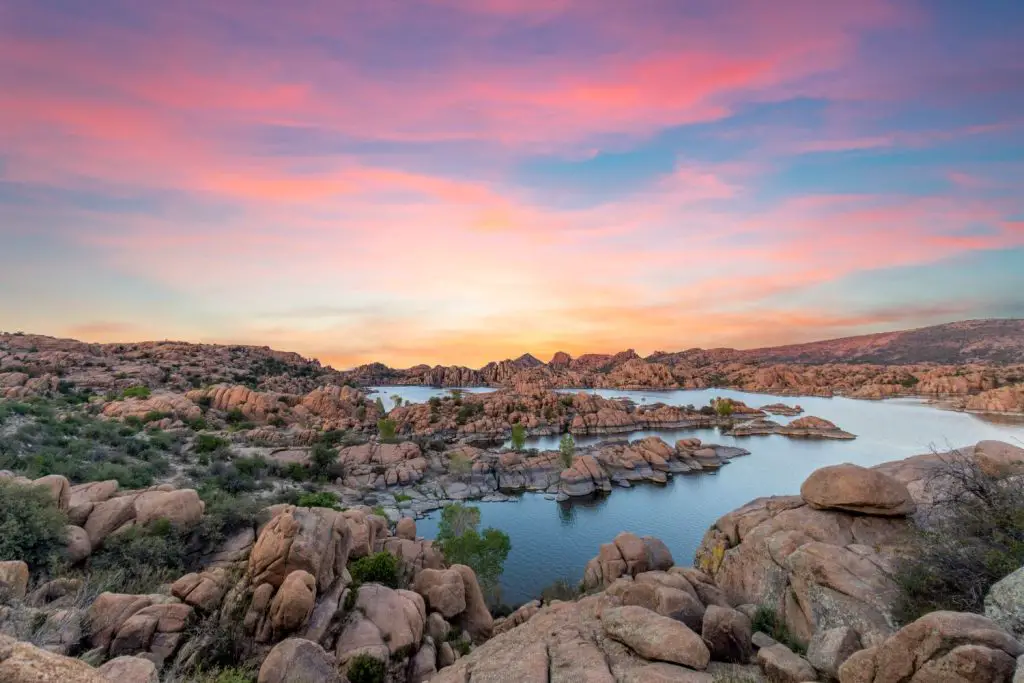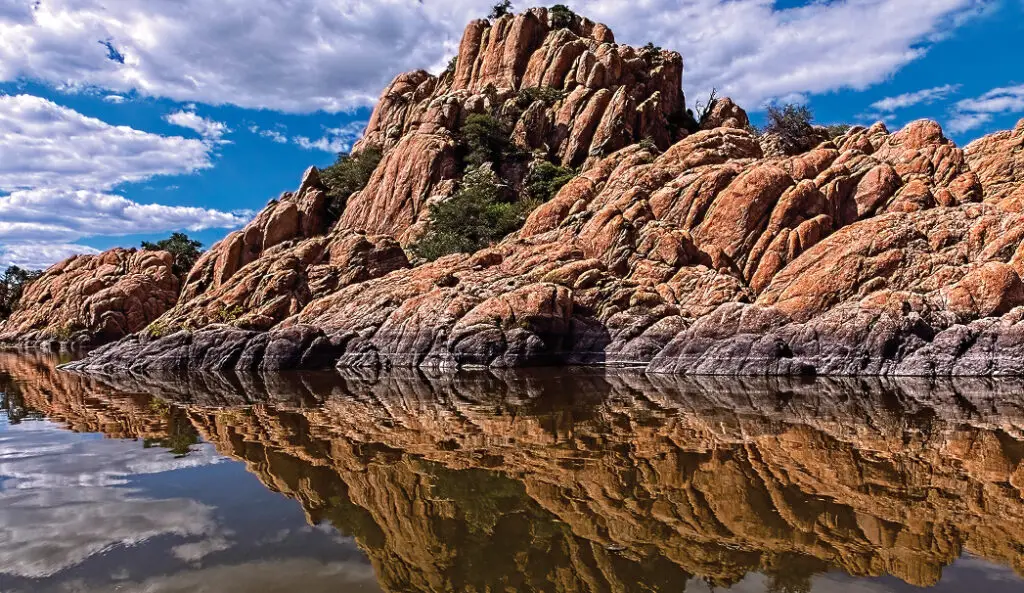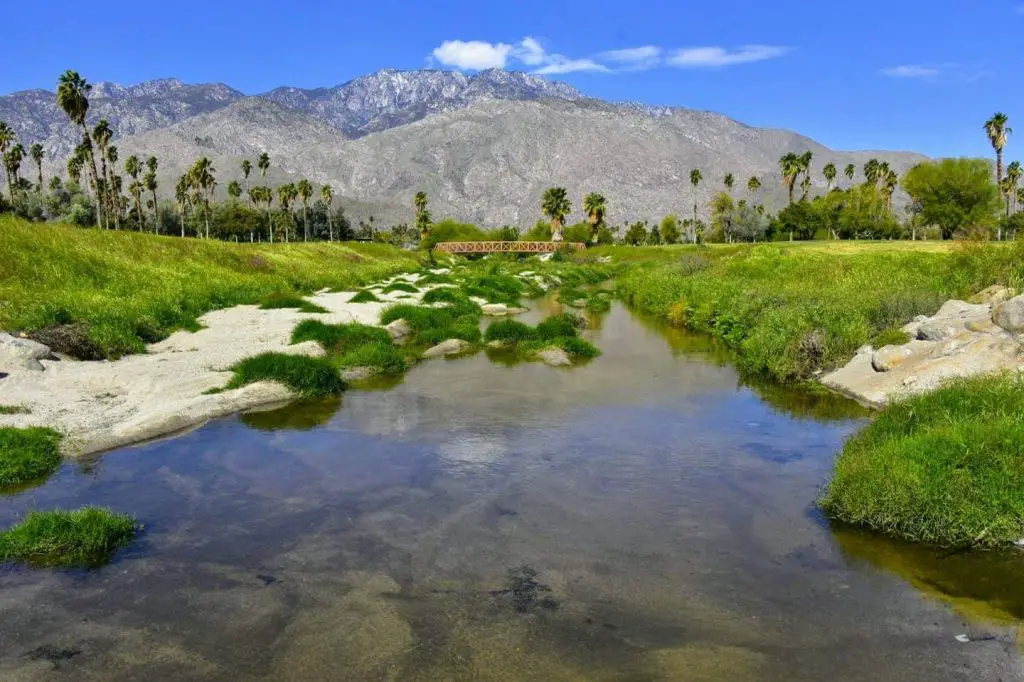The city of Prescott often hailed for its rich historical heritage, has a lesser-known but equally important side to it – its natural landmarks. The scenic beauty of places like Granite Dells or Watson and Willow Lakes is unparalleled. However, the Preservation efforts for natural landmarks in Prescott are becoming increasingly important due to the myriad of threats they face.

From climate change to over-tourism, these precious landmarks are at risk. This article delves deep into the multifaceted efforts to protect and preserve Prescott’s natural wonders for future generations.
Overview of Prescott’s Natural Landmarks
Prescott, a city in Arizona, boasts a plethora of natural landmarks, each with its unique charm and significance. These landmarks aren’t just symbols of beauty; they are the essence of the region, playing vital roles ecologically, culturally, and economically.
The Granite Dells is a series of exposed bedrock and large boulders of granite that have eroded into an astonishingly rugged appearance. These Dells provide a picturesque setting, especially during sunsets when the rocks seem to glow in fiery shades of orange and red.
The Hike Arizona website offers a comprehensive guide to hiking trails that allow visitors to witness the breathtaking beauty of the Dells.
The Breathtaking Watson and Willow Lakes
Not too far from the heart of Prescott lie Watson and Willow Lakes – two artificial reservoirs surrounded by massive granite boulders. Both lakes are vital not only as water sources but also as recreational hubs for the local community. Bird watching is particularly popular, especially given the migratory patterns that pass through this area.
Easily distinguishable from most parts of Prescott, Thumb Butte stands tall as the city’s defining natural landmark. This distinctive granite landmark provides an excellent trail for hikers, and its summit offers panoramic views of Prescott and beyond.
Thumb Butte has a history entwined with the city, and efforts to preserve it are of paramount importance, as detailed on the Prescott National Forest’s official page.
The Role of Local Communities
Local communities are often the unsung heroes in the narrative of preservation. Being intimately connected to their surroundings, they inherently understand the value and significance of natural landmarks. Their daily lives, cultural practices, and historical narratives are deeply intertwined with these landscapes. As such, local communities play a multifaceted role in conservation.
First, they act as guardians, monitoring any threats and ensuring sustainable use of resources. Second, their traditional knowledge can offer invaluable insights into effective conservation strategies, honed over generations of coexistence with nature. Lastly, community-driven eco-tourism initiatives can create economic opportunities while promoting responsible interaction with the environment.
Thus, engaging and empowering local communities is not just beneficial—it’s essential for the genuine and lasting preservation of our planet’s treasured landmarks.

Grassroots Movements in Landmark Preservation
Over the years, many grassroots movements have sprung up in Prescott, aiming to protect and preserve the region’s natural landmarks. These movements often involve collaborative efforts among residents, local businesses, and environmentalists. For instance, the Save the Dells campaign has garnered significant support, evident from its official website.
Apart from formal movements, there’s an inspiring trend in Prescott where communities come together for cleanup drives, awareness campaigns, and even funding drives for conservation projects. Such efforts ensure that everyone, from children to the elderly, plays a part in preserving the natural heritage.
The Government’s Involvement in Preservation
The government plays a pivotal role in the preservation of natural landmarks and the environment at large. As custodians of public land and resources, governmental bodies have the power to enact policies, regulations, and laws that protect these treasured sites from degradation.
This can range from setting up protected areas and national parks, to enforcing zoning laws that prevent unchecked urban sprawl near vital habitats. Furthermore, the government can allocate funds towards conservation projects, research, and infrastructural development that promotes sustainable tourism.
Through partnerships with local communities, NGOs, and international environmental bodies, the government can ensure a holistic approach to preservation, balancing economic development with the crucial need to safeguard our natural heritage for future generations.
Current Regulations and Policies
Arizona’s state government, in tandem with Prescott’s local authorities, has implemented regulations ensuring that natural landmarks are protected. For instance, zoning laws prevent any form of construction that might harm the ecological balance of places like Thumb Butte. The City of Prescott’s official site provides detailed information on these regulations.
The government often collaborates with non-profit organizations that are vested in environmental conservation. These partnerships amplify the impact of preservation efforts, ensuring that every measure, be it policy formulation or on-ground activities, is effective and efficient.
Importance of Environmental Education
Environmental education serves as the cornerstone for fostering a sustainable future. It equips individuals, especially the younger generation, with the knowledge, skills, and passion to be responsible stewards of the environment.

By understanding the intricacies of ecosystems, the threats they face, and the solutions available, individuals can make informed decisions that favor conservation. Furthermore, such education cultivates a deeper appreciation for nature, encouraging responsible behaviors like recycling, conserving resources, and supporting preservation initiatives.
In essence, environmental education is not just about transferring knowledge; it’s about shaping mindsets and building a community that prioritizes the planet’s well-being alongside its own.
Educational Programs in Schools
Prescott’s schools have integrated environmental education into their curriculum. Children are taught about the significance of their city’s landmarks from an early age, fostering a sense of pride and responsibility.
Public campaigns, often organized in collaboration with local NGOs, spread awareness about the need for conservation. These campaigns, which might include seminars, workshops, and nature walks, aim to reach a broader audience, ensuring everyone in Prescott plays their part in conservation.
Financial Aspects of Preservation
The financial dimension of preservation is both complex and crucial. Preserving natural landmarks requires substantial funding, which goes into research, restoration projects, and continuous maintenance. Funding sources range from government grants to donations from private entities and international environmental organizations.
Yet, it’s essential to see this not as an expenditure but as an investment. Direct economic returns come in the form of tourism and the boost it gives to local businesses. Indirectly, preserving natural spaces can enhance property values, improve public health, and ensure the region’s sustained ecological balance.
Thus, while the upfront costs might seem steep, the long-term economic and societal benefits of preservation are truly invaluable.
Funding Sources for Preservation Efforts
Preservation projects in Prescott receive funds from various sources, including government grants, private donations, and international environmental bodies. Events like fundraisers and charity runs also contribute significantly.
It’s essential to understand that preserving natural landmarks isn’t just an environmental need; it has tangible economic benefits. Tourists flock to Prescott to witness its scenic beauty, boosting local businesses in the process. The Economic Value of Protected Open Spaces provides a deeper understanding of these dynamics.
Role of Technology in Landmark Conservation
In the modern era, technology has emerged as a powerful ally in landmark conservation. Digital tools, from drones capturing aerial footage to advanced satellite imagery, offer unprecedented insights into the health and status of natural landmarks. These tools allow for real-time monitoring, early threat detection, and detailed documentation.
Furthermore, innovations like virtual tours let global audiences experience the splendor of landmarks without the environmental footprint of physical visits. Thus, technology not only amplifies conservation efforts but also ensures they are sustainable and effective for the long haul.
Digital Documentation and Virtual Tours
Digital documentation ensures that every aspect of a landmark is recorded for posterity. Additionally, virtual tours, like those offered by Google Earth, allow individuals worldwide to experience the beauty of Prescott’s landmarks without physically being there, minimizing the ecological impact.
Advanced tech, like drones or satellite imagery, is now used to monitor natural landmarks, ensuring that any threats (natural or man-made) are detected early and dealt with promptly.
Tourism and Its Dual Role
Tourism in Prescott is a double-edged sword. On one side, it brings economic prosperity, supporting local businesses and promoting cultural exchange. Tourist revenue can be channeled into preservation projects, ensuring the longevity of the very landmarks they come to see.
On the flip side, unchecked tourism can lead to overcrowding, environmental degradation, and strain on local resources. It’s a delicate balance that requires foresight and sustainable practices to ensure that the blessings of tourism don’t turn into a curse for Prescott’s cherished natural landmarks.
Tourism as a Supporter of Preservation
Tourism, when channeled correctly, can significantly aid preservation efforts. Tourist dollars often fund preservation projects, and global attention ensures that the government and other stakeholders remain committed to conservation.

The adverse effects of over-tourism can’t be ignored. Overcrowding, littering, and habitat disruption are genuine concerns. Efforts are being made to educate tourists, ensuring they respect the sanctity of these natural landmarks.
FAQs:
In this section, we will be delving into some of the most common inquiries and curiosities that surround our topic.
Why is it crucial to preserve Prescott’s natural landmarks?
Preserving these landmarks is vital not just for their aesthetic value but for their ecological, cultural, and economic significance.
How can local residents contribute to preservation efforts?
Residents can support grassroots movements, participate in community drives, and adopt sustainable practices in their daily lives.
How does preserving natural landmarks benefit the local economy?
Preservation ensures that these landmarks remain tourist attractions for years to come. Tourism boosts local businesses, from restaurants to souvenir shops, and creates job opportunities.
What are the most significant threats to Prescott’s natural landmarks today?
The most pressing threats include unchecked urban development, over-tourism, climate change effects, and pollution. Collective action is required to mitigate these challenges.
Conclusion
Prescott, with its pristine natural beauty, holds a special place in the hearts of its residents and the many visitors it attracts every year. But the clock is ticking. The very essence of what makes Prescott unique is under threat, but not all hope is lost.
Through collective effort, strategic planning, community involvement, and the judicious use of technology, we can ensure that these natural landmarks stand tall for generations to come.
Protecting Prescott’s natural treasures isn’t just about preserving their beauty. It’s about honoring our past, enjoying the present, and ensuring a legacy for the future. So, whether you’re a resident of this beautiful city or a visitor passing through, remember to tread lightly, respect the environment, and do your part in preserving Prescott’s irreplaceable natural landmarks.
After all, they aren’t just landmarks; they’re a testament to nature’s grandeur and human determination to protect and cherish it.



Leave a Comment
You must be logged in to post a comment.